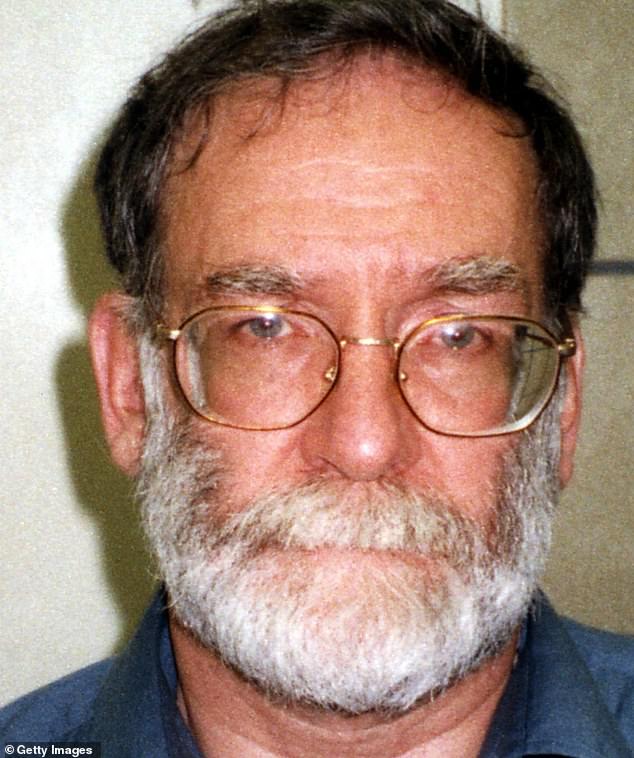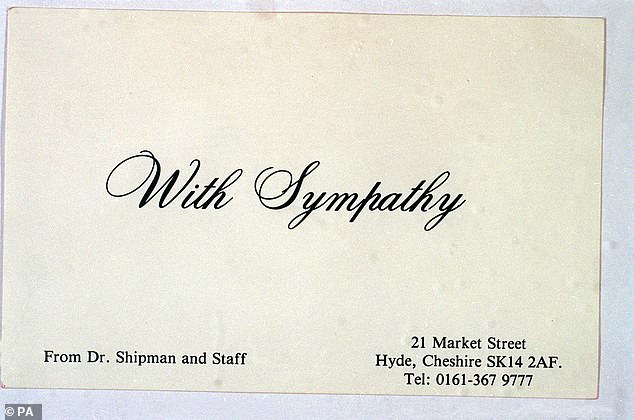- The Psychology of a Serial Killer: Listen here – or binge the whole series ad-free when you subscribe to The Crime Desk , the home of arresting podcasts
Published: | Updated:
Britain’s worst serial killer, Harold Shipman, murdered patients simply because they annoyed him, a forensic psychologist who studied the case details in a new Mail podcast.
On the latest episode of the Psychology of a Serial Killer podcast – which focuses on Shipman’s many victims – Dr Andrew Johns, who testified at the national inquiry, exposed this chilling pattern.
Whether it was a frail patient whose son called too often, or an anaemic pensioner whose treatment inconvenienced him, Dr Johns reveals how trivial irritations became death sentences in Shipman’s twisted mind.
Shipman, a GP, is suspected of killing 215-250 patients between 1975 and 1998 by injecting them with lethal doses of diamorphine (medical heroin).
Listen to The Psychology of a Serial Killer below or by clicking here.
Shipman’s murders as a junior doctor
During medical training, Shipman was posted to Yorkshire’s Pontefract General Infirmary in 1970 to work as a junior doctor.
Despite having only limited and supervised access to patients, it was in Yorkshire where Shipman began his killing spree.
Although many of the medical records from Shipman’s time at Pontefract are missing, the Inquiry connected at least six highly suspicious deaths to the junior doctor.



‘He killed five men and one woman’, Dr Andrew Johns told the podcast.
‘It’s clear from his time at that hospital that he killed opportunistically, regardless of gender, dispelling one of the myths about Shipman.
‘The first of these murders was Thomas Columbine. His death exhibits one of Shipman’s lifelong characteristics – killing patients because they annoyed him.
‘Columbine was only 54 when he died in April 1972. It is clear from Shipman’s notes that he was irritated by him.
‘Columbine soon deteriorated, and he was unlawfully killed with an injection of morphine by Shipman.
‘Amazingly, just weeks later, it is likely Shipman killed three patients within 45 minutes by administering similar injections while no nurses were around.
‘A month on from that incident, two men died within ten minutes of each other in adjoining cubicles under Shipman’s care.
‘These deaths were all unexpected and should have been reported to a coroner, but Shipman chose not to.
‘His consultants were unaware – one described the junior doctor as the best houseman they’d ever had.’
Shipman’s murders as a GP
Reneging on his promise to the GMC (General Medical Council) to never work again as a General Practitioner after being caught abusing prescription painkillers, Shipman joined the Donneybrook Medical Centre in Hyde, Greater Manchester, in 1977.
Building a reputation in the community for being a dedicated and hardworking doctor, Shipman was able to be more brazen in the murder of patients who irked him.
Dr Andrew Johns shared with the podcast some of the most egregious examples of the doctor’s callousness at Donneybrook.
He said: ‘Mary is a lively 81-year-old widow. She visits her doctor. We know it can’t have been anything serious, otherwise she would have told her daughter.
‘The receptionist remembers her arriving fit and healthy. Shipman tells Mary to step into the examination room and get undressed.
‘Half an hour later, the doctor calmly phones the receptionist to say Mary has died and that she should call for an ambulance. He had made no such call.
‘Having injected Mary with a lethal dose of morphine, Shipman continued to see patients throughout the day to give himself an alibi.
‘He tells the daughter that Mary had a heart attack, and she accepts the doctor’s version of events.


‘Shipman could be astonishingly flippant and jocular. Edith Brady, 72, suffers from pernicious anaemia. She has to go to Shipman’s surgery to receive regular vitamin injections.
‘He instead injects her with morphine, and she dies immediately. Shipman then phones her son-in-law, a policeman, who asks, ‘How bad is it?’
‘Shipman responds: How bad do you want it? There’s no way she’s walking out of here.
‘Shipman treated another patient, Harold Eddlestone, for cancer. His son asks him how long he’s likely to live, to which Shipman answers, ‘I wouldn’t buy him any Easter eggs.’
‘Four days later, he murders him.’
To hear more examples of Shipman’s callous regard for human life, search for The Psychology of a Serial Killer now, wherever you get your podcasts.








